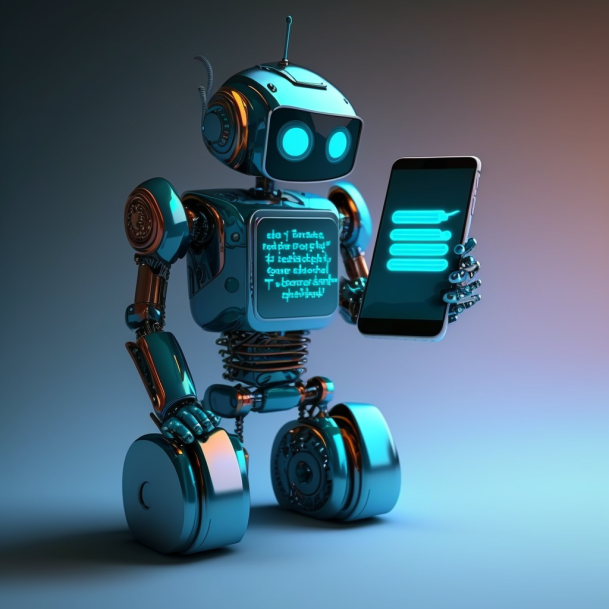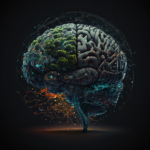As technology advances, so does the way we communicate with machines. The development of conversational AI has revolutionized the way businesses interact with their customers, with chatbots being one of the most commonly used tools. However, traditional chatbots are limited in their capabilities, often leading to frustration for both businesses and their customers. This is where ChatGPT comes in. In this article, we will explore the differences between ChatGPT and traditional chatbots, and how ChatGPT is changing the game.
What are traditional chatbots?
Traditional chatbots are rule-based systems that use pre-defined scripts to respond to user input. They are typically limited to a specific set of commands and cannot understand natural language. While they can be useful for simple tasks like answering FAQs, they often fall short when it comes to complex queries or conversations. This leads to a frustrating experience for users who may not get the information they need or have to navigate through a series of menus to get a response.

What is ChatGPT?
ChatGPT, on the other hand, is a state-of-the-art conversational AI model that is capable of understanding natural language and generating responses that are both relevant and contextually appropriate. It uses machine learning algorithms to learn from vast amounts of data, including text, images, and videos, to continuously improve its responses. This means that it can handle complex queries and conversations, making it a much more effective tool for businesses to engage with their customers.
Advantages of ChatGPT over traditional chatbots
Understanding natural language
One of the biggest advantages of ChatGPT is its ability to understand natural language. This means that users can interact with it in a way that feels more human-like, without having to worry about using specific commands or keywords. ChatGPT can interpret the meaning behind the words and generate responses that are both relevant and contextually appropriate.
Continuous learning
Another advantage of ChatGPT is its ability to continuously learn from data. It can analyze vast amounts of text, images, and videos to improve its responses over time. This means that it can adapt to changes in language and user behavior, making it a much more effective tool for businesses to engage with their customers.
Ability to handle complex queries and conversations
Traditional chatbots are often limited in their capabilities when it comes to handling complex queries and conversations. ChatGPT, on the other hand, can handle a wide range of queries, from simple to complex, and can even hold context across multiple messages. This makes it a much more effective tool for businesses to engage with their customers, as they can provide more detailed and personalized responses.
Cost-effective
While traditional chatbots can be a cost-effective way for businesses to automate customer service, they often require a significant investment in time and resources to set up and maintain. ChatGPT, on the other hand, can be integrated into existing systems with minimal effort and can be trained on existing data, reducing the need for additional resources.
The Disadvantages of ChatGPT over Traditional Chatbots
ChatGPT is a remarkable advancement in conversational AI, but like any technology, it has its limitations. In this article, we will explore the disadvantages of ChatGPT when compared to traditional chatbots.
Training time and data requirements
One of the major disadvantages of ChatGPT is its training time and data requirements. ChatGPT is a deep learning model that requires massive amounts of data to train. This means that businesses must have access to vast amounts of data, and the training process can take several days or even weeks.
In contrast, traditional chatbots can be trained with a smaller dataset and require less time for training. This makes them more accessible for small businesses with limited data and resources.
Lack of control
Another disadvantage of ChatGPT is the lack of control that businesses have over the output. While traditional chatbots operate on a set of predefined rules and responses, ChatGPT generates responses based on the data it has been trained on. This means that businesses have less control over the output, and there is a higher risk of generating inappropriate or inaccurate responses.
Limited customization
ChatGPT also has limited customization compared to traditional chatbots. With traditional chatbots, businesses have full control over the design and functionality, allowing them to create a chatbot that fits their brand and meets their specific needs. With ChatGPT, there is less flexibility to customize the design and functionality, which can make it difficult to create a chatbot that aligns with a business’s branding and requirements.
Higher cost
Another disadvantage of ChatGPT is the higher cost. As mentioned earlier, ChatGPT requires a vast amount of data and computing power, making it a more expensive option for businesses. In contrast, traditional chatbots are often more affordable, making them a viable option for small businesses.
Complexity
ChatGPT is a complex system that requires a high level of technical expertise to operate and maintain. This means that businesses may need to hire specialized personnel to manage the system, which can increase costs and add another layer of complexity to the business’s operations.
Future of conversational AI
As ChatGPT continues to evolve, it is likely that we will see even more advanced versions of conversational AI in the future. With the potential to understand not just the meaning of words, but also the context behind them, the possibilities for ChatGPT are endless. It could be used for a range of applications, from virtual assistants to customer service chatbots, and could even be integrated into social media platforms.
The importance of a human touch
While ChatGPT may represent a significant advancement in conversational AI, it is important to remember the value of the human touch. While machines can be efficient and accurate, they lack the emotional intelligence that humans possess. This is where the concept of hybrid chatbots comes in, which combines the efficiency of machines with the empathy of humans. By integrating both human and machine interactions, businesses can provide a more personalized and human-like experience for their customers.
In conclusion, ChatGPT represents a significant evolution in conversational AI, offering businesses a much more effective way to engage with their customers. Its ability to understand natural language, continuously learn from data, and handle complex queries and conversations make it a game-changer for businesses looking to improve their customer service. While traditional chatbots may still have their place in certain applications, ChatGPT is the future of conversational AI.




One Comment
Leave a ReplyOne Ping
Pingback:Potential Applications of Chatbots in the Travel Industry